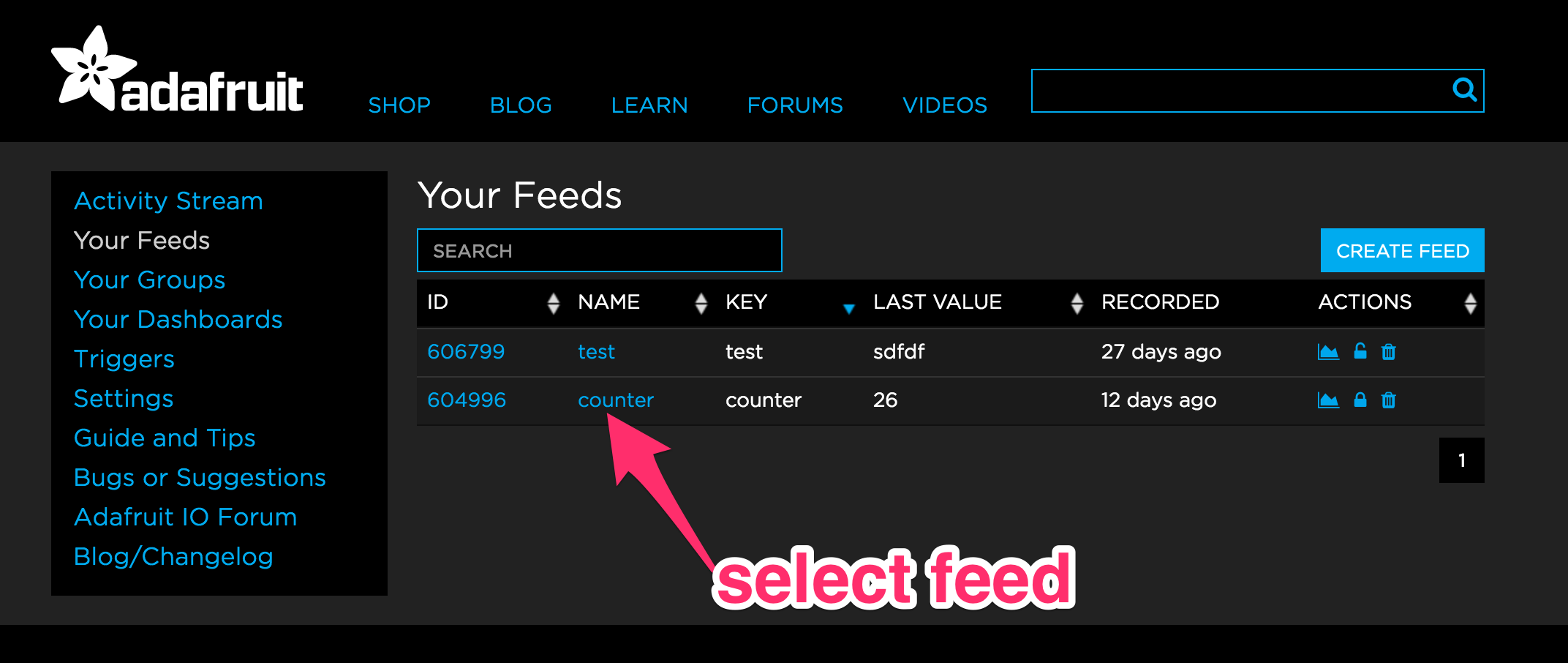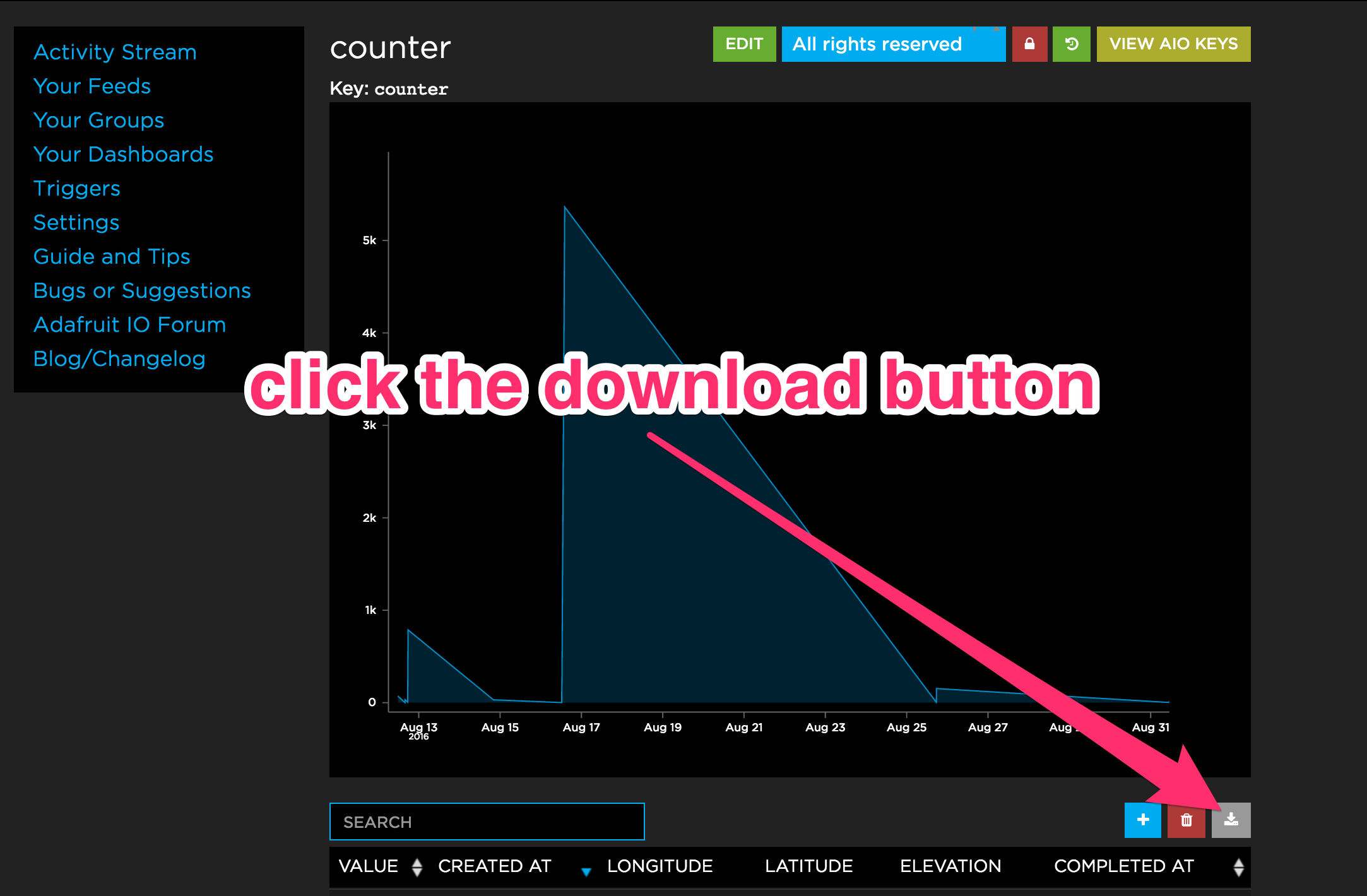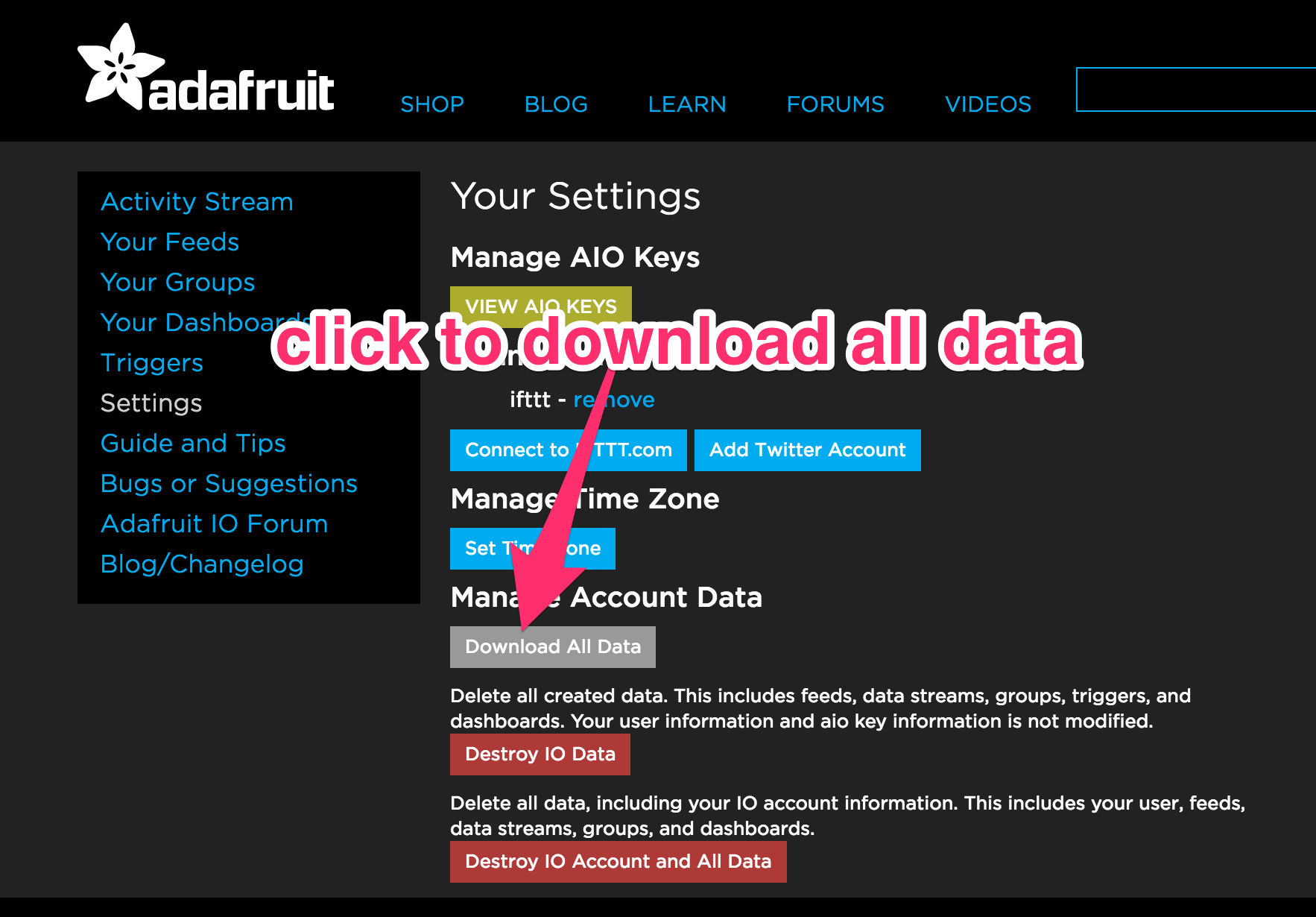-
State of IO 11.07.16
Here are the stats for the past week:
* 54.7 million inserts of logged data in the last 7 days * 18,147 users * 13,309 online feeds (46,968 feeds total) * ~77 inserts per second via MQTT * ~10 inserts per second via REST API -
State of IO 10.05.16
Here are the stats for the past week:
* 48.2 million inserts of logged data in the last 7 days * 16,798 users * 12,383 online feeds (42,857 feeds total) * ~75 inserts per second via MQTT * ~10 inserts per second via REST API -
SSH Config Includes
OpenSSH version 7.3 introduced a very handy
Includefeature, which is great for people who have to manage connection info for multiple servers. This makes it easy for us to generate updated SSH configs via AWS CLI for the multiple EC2 instances that serve Adafruit IO.Here is how you can use
Includeto pull in separate SSH config files from your main~/.ssh/config. First, you will need to install OpenSSH version 7.3 or higher. If you are using Linux, you will need to install version 7.3+ via your package manager (yum,apt-get, etc), or build it from source.On OS X, you can do this via homebrew:
$ brew install homebrew/dupes/opensshConfirm that you are now running 7.3 or higher by running
ssh -V:$ ssh -V OpenSSH_7.3p1, OpenSSL 1.0.2j 26 Sep 2016Now you can create a new child config file in
~/.sshusing a text editor. For example, we can create an example child config at~/.ssh/pi_configand add configuration info just as we would in the main SSH config file:Host pi-1 HostName 10.0.0.10 User pi IdentityFile ~/.ssh/pi_cluster Host pi-2 HostName 10.0.0.11 User pi IdentityFile ~/.ssh/pi_cluster Host pi-3 HostName 10.0.0.12 User pi IdentityFile ~/.ssh/pi_clusterFrom your main
~/.ssh/config, add the following line at the top:Include ~/.ssh/pi_configYou should now be able to connect to your servers as you normally would:
$ ssh pi-1That’s it! Check out this OpenSSH feature request if you would like more info.
-
State of IO 09.20.16
Here are the stats for the past week:
* 45.3 million inserts of logged data in the last 7 days * 16,227 users * 11,985 online feeds (41,024 feeds total) * ~75 inserts per second via MQTT * ~10 inserts per second via REST API -
Exporting Data from Adafruit IO
Here’s a quick tip to help you export one of your Adafruit IO feeds as CSV, Excel, JSON, or XML. First, you will need to navigate to io.adafruit.com/feeds. Once your feed list has loaded, select the feed you wish to export:

Then, click the download button below the chart:

A modal will pop up and allow you to download your feed as CSV, Excel, JSON, or XML:

If you would like to download all a copy of all of your Adafruit IO data, you can do this by navigating to io.adafruit.com/settings, and clicking the
Download All Databutton. This button will currently only allow you to download your data in JSON format.
Was this tip helpful? Please visit our IO forum to ask questions or share your thoughts.
